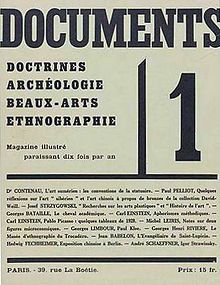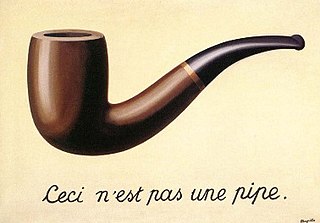
Surrealism is an art and cultural movement that developed in Europe in the aftermath of World War I in which artists aimed to allow the unconscious mind to express itself, often resulting in the depiction of illogical or dreamlike scenes and ideas. Its intention was, according to leader André Breton, to "resolve the previously contradictory conditions of dream and reality into an absolute reality, a super-reality", or surreality. It produced works of painting, writing, theatre, filmmaking, photography, and other media as well.
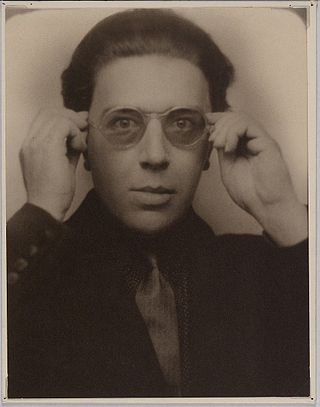
André Robert Breton was a French writer and poet, the co-founder, leader, and principal theorist of surrealism. His writings include the first Surrealist Manifesto of 1924, in which he defined surrealism as "pure psychic automatism".
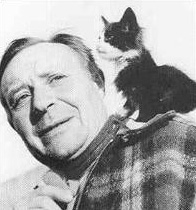
André-Aimé-René Masson [andʁe aime ʁene masɔ̃] was a French artist.

Penelope Rosemont is a visual artist, writer, publisher, and social activist who attended Lake Forest College. She has been a participant in the Surrealist Movement since 1965. With Franklin Rosemont, Bernard Marszalek, Robert Green and Tor Faegre, she established the Chicago Surrealist Group in 1966. She was in 1964-1966 a member of the Industrial Workers of the World (IWW), commonly known as the Wobblies, and was part of the national staff of Students for a Democratic Society (SDS) in 1967-68. Her influences include Andre Breton and Guy Debord of the Situationist International, Emma Goldman and Lucy Parsons.
The Surrealist Manifesto refers to several publications by Yvan Goll and André Breton, leaders of rival surrealist groups. Goll and Breton both published manifestos in October 1924 titled Manifeste du surréalisme. Breton wrote a second manifesto in 1929, which was published the following year, and a third in 1942.
Arsenal/Surrealist Subversion was a surrealist magazine published in Chicago and edited by Franklin Rosemont. It appeared infrequently between 1970 and 1989. Apart from Rosemont, the editor in chief, the magazine's editorial board included other members of the Chicago Surrealist group. The first issue of the magazine was published in October 1970. Four issues have appeared, the second in 1973, the third in 1976 and the fourth and most recent in 1989. The publisher of all four issues was Black Swan Press.

Ithell Colquhoun was a British painter, occultist, poet and author. Stylistically her artwork was affiliated with Surrealism. In the early 1930s she met André Breton in Paris, and later started working with Surrealist automatism techniques in her writing and painting. In the late 1930s, Colquhoun was part of the British Surrealist Group before being expelled because she refused to renounce her association with occult groups, including the Ordo Templi Orientis and the Fellowship of Isis. Despite her break with the movement, Colquhoun was a lifelong adherent to Surrealism and its automatic techniques. Although initially acclaimed, art historians have noted that Colquhoun's reputation suffered during and after World War II when British surrealists such as E. L. T. Mesens pamphleted against her former husband, Toni del Renzio.

La Révolution surréaliste was a publication by the Surrealists in Paris. Twelve issues were published between 1924 and 1929.

Julien Michel Leiris was a French surrealist writer and ethnographer. Part of the Surrealist group in Paris, Leiris became a key member of the College of Sociology with Georges Bataille and head of research in ethnography at the CNRS.

Minotaure was a Surrealist-oriented magazine founded by Albert Skira and E. Tériade in Paris and published in French between 1933 and 1939. Minotaure published on the plastic arts, poetry, and literature, avant garde, as well as articles on esoteric and unusual aspects of literary and art history. Also included were psychoanalytical studies and artistic aspects of anthropology and ethnography. It was a lavish and extravagant magazine by the standards of the 1930s, profusely illustrated with high quality reproductions of art, often in color.
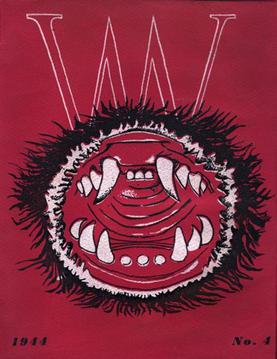
VVV was a magazine devoted to the dissemination of Surrealism published in New York City from 1942 through 1944. It was the product of leading Surrealists.
Jacques Baron (1905–1986) was a French surrealist poet whose first collection of poems was published in Aventure in 1921. Although he was initially involved with the Dada movement, he became a founding member of the Surrealist movement following his meeting with André Breton in 1921, and contributed to La Révolution surréaliste. In 1927, like many of his contemporaries, Baron joined the Cercle Communiste Démocratique. Although fascinated by dream-like states of the nomadic unconscious and other imaginary worlds of the "marvelous", a dispute with Breton in 1929 got him expelled from the movement, and prompted him to contribute to Un Cadavre, an anti-Breton pamphlet. After the break with Surrealism, Baron became associated with Georges Bataille and Documents, in which he published a short essay on "Crustaceans for the Critical Dictionary", an article on the sculptor Jacques Lipchitz, and a poem dedicated to Picasso, "Flames". He later collaborated on a number of reviews such as Le Voyage en Grèce, La Critique Sociale and Minotaure. Baron also wrote a novel, Charbon de mer (1935), a mémoire, L’An 1 du Surréalisme (1969), and a collection of poems, L’Allure poétique (1973).
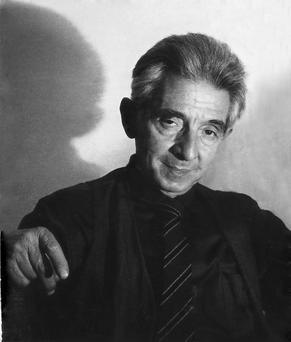
Georges Alexandre Malkine was the only visual artist named in André Breton's 1924 Surrealist Manifesto among those who, at the time of its publication, had “performed acts of absolute surrealism." The rest Breton named were for the most part writers, including Louis Aragon, Robert Desnos, and Benjamin Peret. Malkine's 1926 painting Nuit D'amour was the precursor of the lyrical abstract school of painting.

View was an American literary and art magazine published from 1940 to 1947 by artist and writer Charles Henri Ford, and writer and film critic Parker Tyler. The magazine is best known for introducing Surrealism to the American public. The magazine was headquartered in New York City.
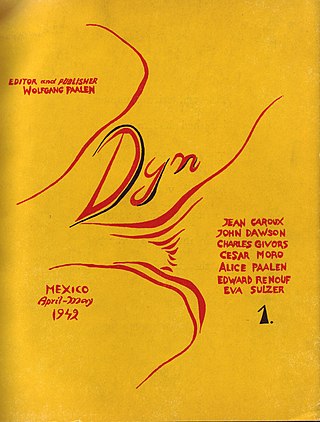
DYN was an art magazine founded by the Austrian-Mexican Surrealist Wolfgang Paalen, published in Mexico City, and distributed in New York City, and London between 1942 and 1944. Only six issues were produced.
Georges Limbour was a French writer, poet and art critic, and a regent of the Collège de 'Pataphysique.
Le Surréalisme au service de la révolution was a periodical issued by the Surrealist Group in Paris between 1930 and 1933. It was the successor of La Révolution surréaliste and preceded the primarily surrealist publication Minotaure.
Un Cadavre was the name of two separate surrealist pamphlets published in France in October 1924, and January 1930, respectively.
Nicolas Calas was the pseudonym of Nikos Kalamaris, a Greek-American poet and art critic. While living in Greece, he also used the pseudonyms Nikitas Randos and M. Spieros.

Marko Ristić was a Serbian surrealist poet, writer, publicist and ambassador.
